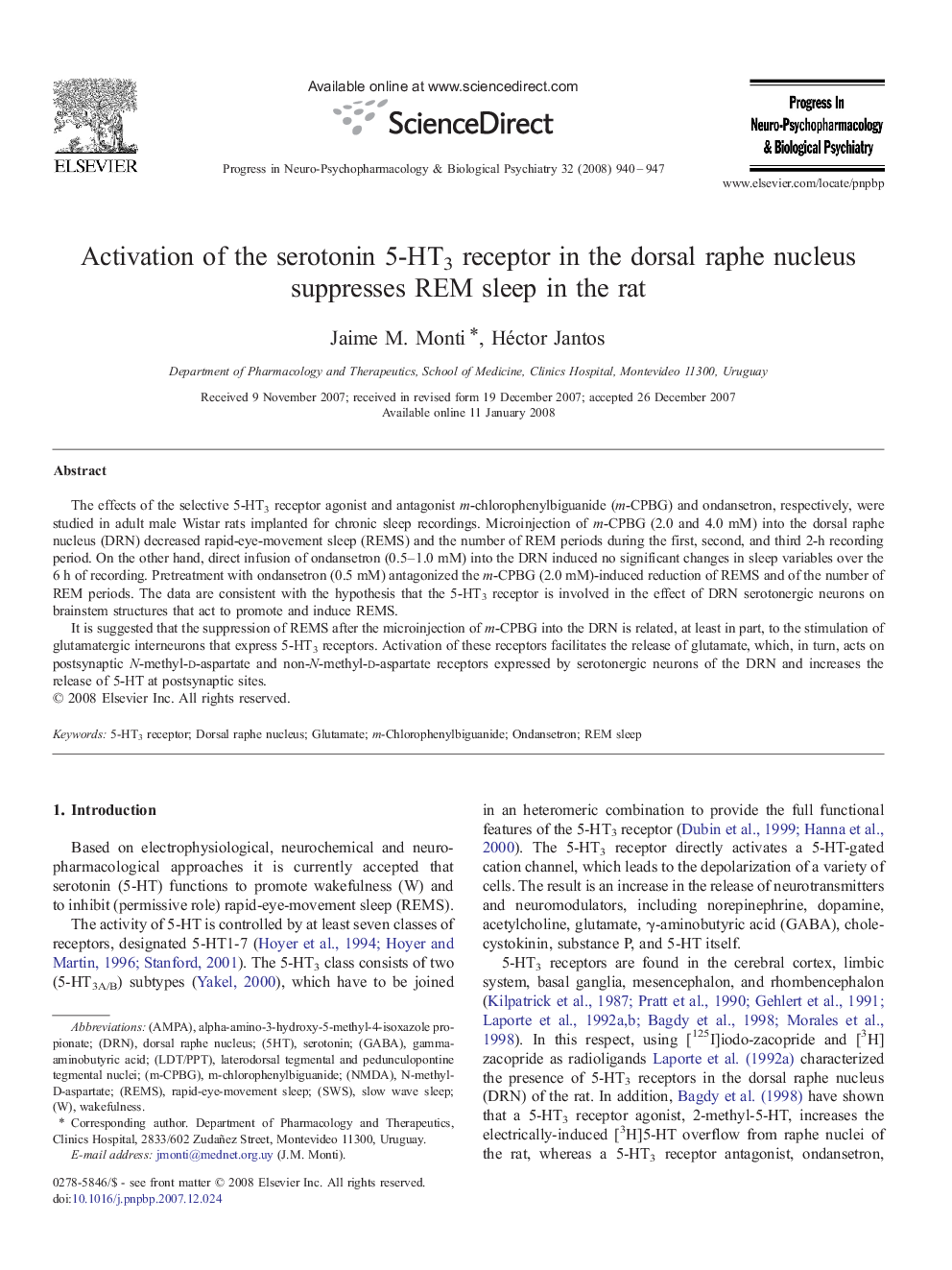| Article ID | Journal | Published Year | Pages | File Type |
|---|---|---|---|---|
| 2565898 | Progress in Neuro-Psychopharmacology and Biological Psychiatry | 2008 | 8 Pages |
The effects of the selective 5-HT3 receptor agonist and antagonist m-chlorophenylbiguanide (m-CPBG) and ondansetron, respectively, were studied in adult male Wistar rats implanted for chronic sleep recordings. Microinjection of m-CPBG (2.0 and 4.0 mM) into the dorsal raphe nucleus (DRN) decreased rapid-eye-movement sleep (REMS) and the number of REM periods during the first, second, and third 2-h recording period. On the other hand, direct infusion of ondansetron (0.5–1.0 mM) into the DRN induced no significant changes in sleep variables over the 6 h of recording. Pretreatment with ondansetron (0.5 mM) antagonized the m-CPBG (2.0 mM)-induced reduction of REMS and of the number of REM periods. The data are consistent with the hypothesis that the 5-HT3 receptor is involved in the effect of DRN serotonergic neurons on brainstem structures that act to promote and induce REMS.It is suggested that the suppression of REMS after the microinjection of m-CPBG into the DRN is related, at least in part, to the stimulation of glutamatergic interneurons that express 5-HT3 receptors. Activation of these receptors facilitates the release of glutamate, which, in turn, acts on postsynaptic N-methyl-d-aspartate and non-N-methyl-d-aspartate receptors expressed by serotonergic neurons of the DRN and increases the release of 5-HT at postsynaptic sites.
